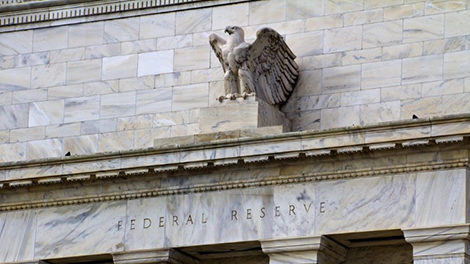Midyear Outlook—part 2: Room for growth in U.S. equities
by Aldo Ceccarelli, CFA, Wells Fargo Asset Management
In the second of a three-part series, our capital market strategists discuss their growth outlook for U.S. equities.
Anar Hooper: This is our Midyear Outlook 2016. Don’t rule out the U.S. There’s still room for growth. Thank you for joining us again. I’m Anar Hooper; welcome. Gentlemen, thank you for being here today.
Jim Kochan: Thank you.
John Manley: Good to be here.
Brian Jacobsen: Thank you.
Anar: Don’t rule out the U.S.; there’s still opportunity. John I’d like to begin with you. Earlier this year, there were talks of the R word: recession. Where are we now?
John: I think we’re moving away from the recession. I think we’re moving toward stronger growth. If you look at the American consumer, who really starts up every cycle when they start to spend, they pull a lot of things into their vortex. Earnings can get better. The economy can get better. I think the U.S. right now is sort of fairly valued. It’s around the average P/E of the last 20 years, but it can go to an overvaluation—and usually bull markets do go to overvaluations before they’re over. Usually people get excited about a market, a bull market, before it ends. That hasn’t happened yet. That leads me to think that’s still in front of us, and with that still in front of us, that’s opportunity. People still are very scared of 2008, not just as a memory, not as a historic memento, but as something that could happen anytime now. That will fade, and when it fades, I think we’ll see a higher marketplace here in the U.S.
Anar: How does this translate to earnings expectations?
John: That’s the trigger in my opinion. What’s happened over the last 12, 15 months is earnings expectations have been flat, the market’s been flat. There’s been nothing to knock the market off dead center. I think if earnings start to accelerate, that’s going to surprise a lot of people. People who wouldn’t buy stocks now will buy stocks, in my opinion. That’s the sort of thing that can move us to an overvaluation, unlock some of the potential I think is still in the U.S. market.
Anar: So we’re looking at reasonably strong cash flows of companies—continue to expect that?
John: As the economy gets better, I cannot help but think that corporate America will do better. It’s always happened before. I think there will be pressure on wages, but I think it will be resisted to a certain degree. I think that corporations, when they see more leverage on top of already very efficient structures, can do very well on the earnings front.
Anar: Jim, credit markets.
Jim: If cash flow is improving, if earnings are going to be OK, that’s positive for the credit segment of the fixed-income market—by that, we typically refer to the corporate bond market. And one segment of the corporate bond market in particular is highly sensitive to the outlook for earnings and the outlook for the economy, and that is the high-yield bond market. A few months ago, we were looking at relatively depressed valuations in high yield. The recognition that the economy is doing OK has helped the high-yield market rally, but we’re still at historically favorable valuations there.
Anar: Brian, I would love to get your thoughts.
Brian: Different leading economic indicators lead me to believe that the likelihood of the U.S. economy going into a recession over the next 6 months or even over the next 12 months is very low.
Anar: If you’re an investor in an election year, where do you go in the U.S.?
Brian: I think that in an election year or in any year, it’s about where is the value, where is the opportunity? And right now within the U.S. markets, I think that there is a strong reason to still believe that what we said at the annual outlook back in December actually still holds, which is the outlook is not bad. Valuations are reasonable in the United States. I think if you’re looking across the capitalization spectrum going from small to mid to large, it’s probably more attractive if you move down a little bit, more into the mid-cap space. But you know, nothing really that’s going on I think calls for dramatic shifts in your long-term portfolio strategy.
Anar: Jim, high yield is where you would suggest investors to go within fixed income?
Jim: Well, we can’t allocate a huge portion of a portfolio to high yield, but I think in an environment in which market yields that tip away from the corporate market are extremely low, in my view, we ought to have a maximum allocation to high yield that the client would be comfortable with given his risk tolerance, yes.
Anar: John, I would like to close with you. Where should investors go?
John: I still see good valuation in the U.S., not great; overseas, still phenomenal. Stories in the U.S.: I think the energy sector, especially the big multinational integrated companies, is very attractive at this point in time. I still think business-to-business technology corporations are going to continue to want to become more effective, more efficient as they go forward, and I still think the health care sector, although it’s not cheap, it’s cheaper than it used to be. And you have wonderful demographics and wonderful science and government spending all working in your favor.
Anar: Well, gentlemen, thank you; it’s been an absolute pleasure.
Jim: You’re welcome.
Brian: Thank you.
John: You’re welcome.
Anar: I’m Anar Hooper. Thanks again.
Copyright © Wells Fargo Asset Management














